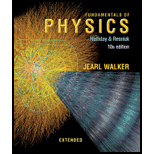
Concept explainers
Figure 11-23 shows three particles of the same mass and the same constant speed moving as indicated by the velocity vectors. Points a, b, c, and d form a square, with point e at the center. Rank the points according to the magnitude of the net
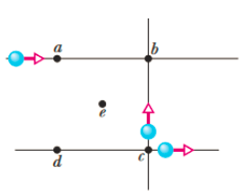
Figure 11-23 Question 1.
To find:
Ranking the points according to the magnitude of the net angular momentum of the three-particle system.
Answer to Problem 1Q
Solution:
Ranking of magnitude of net angular momentum is
Explanation of Solution
1) Concept:
We can use the concept of angular momentum to find the net angular momentum about each point given.
2) Formulae:
3) Given:
Three masses and their velocity vectors are given.
4) Calculations:
Angular momentum about any point is,
We can write magnitude as,
Where,
So, we can write
The angular momentum is positive for counter clockwise direction and negative for clockwise direction.
Calculation for net angular momentum about point a:
Let
Calculation for net angular momentum about point b:
Calculation for net angular momentum about point c:
Calculation for net angular momentum about point d:
Calculation for net angular momentum about point e:
Ranking of magnitude of angular momentum is:
Conclusion:
We can rank magnitude of net angular momentum using angular momentum concept. We can write equation for each point given at corners of the square.
Want to see more full solutions like this?
Chapter 11 Solutions
Fundamentals of Physics Extended
- For a particle traveling in a straight line, are there any points about which the angular momentum is zero? Assume the line intersects the origin.arrow_forwardA thin rod of length 2.65 m and mass 13.7 kg is rotated at anangular speed of 3.89 rad/s around an axis perpendicular to therod and through its center of mass. Find the magnitude of therods angular momentum.arrow_forwardThe position vector of a particle of mass 2.00 kg as a function of time is given by r=(6.00i+5.00tj), where r is in meters and t is in seconds. Determine the angular momentum of the particle about the origin as a function of time.arrow_forward
- The velocity of a particle of mass m = 2.00 kg is given by v= 5.10 + 2.40 m /s. What is the angular momentumof the particle around the origin when it is located atr= 8.60 3.70 m?arrow_forwardA wheel 2.00 m in diameter lies in a vertical plane and rotates about its central axis with a constant angular acceleration of 4.00 rad/s2. The wheel starts at rest at t = 0, and the radius vector of a certain point P on the rim makes an angle of 57.3 with the horizontal at this time. At t = 2.00 s, find (a) the angular speed of the wheel and, for point P, (b) the tangential speed, (c) the total acceleration, and (d) the angular position.arrow_forwardIf the angular acceleration of a rigid body is zero, what is the functional form of the angular velocity?arrow_forward
- Can you assign an angular momentum to a particle without first defining a reference point?arrow_forwarda thin uniform rod of length 0.800 m and mass Mrotating horizontally at angular speed 20.0 rad/s about an axis through its center. A particle of mass M/3.00 initially attached to one end is ejected from the rod and travels along a path that is perpendicular to the rod at the instant of ejection. If the particle’s speed vp is 6.00 m/s greater than the speed of the rod end just after ejection, what is the value of vp?arrow_forwardA particle has mass 0.5 kg and is traveling along the line x = 5.0 m at 2.0 m/s in the positive y-direction. What is the particle’s angular momentum about the origin?arrow_forward
- A 0.8 kg particle is traveling in the xy-plane along the line y = 2.6 m with a velocity 4.1 m/s. What is the angular momentum (in kg · m2/s) of the particle about the origin? (Express your answer in vector form.)arrow_forwardA light, rigid rod of length ℓ = 1.00 m joins two particles, with masses m1 = 4.00 kg and m2 = 3.00 kg, at its ends. The combination rotates in the xy-plane about a pivot through the center of the rod (see figure below). Determine the angular momentum of the system about the origin when the speed of each particle is 6.20 m/s. (Enter the magnitude to at least two decimal places in kg · m2/s.) What If? What would be the new angular momentum of the system (in kg · m2/s) if each of the masses were instead a solid sphere 11.5 cm in diameter? (Round your answer to at least two decimal places.)arrow_forwardA light, rigid rod of length ℓ = 1.00 m joins two particles, with masses m1= 4.00 kg and m2 = 3.00 kg, at its ends. The combination rotates in the xy-plane about a pivot through the center of the rod (see figure below). Determine the angular momentum of the system about the origin when the speed of each particle is 4.00 m/s. (Enter the magnitude to at least two decimal places in kg·m2/s) What If? What would be the new angular momentum of the system (in kg · m2/s) if each of the masses were instead a solid sphere 13.5 cm in diameter? (Round your answer to at least two decimal places.)arrow_forward
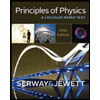 Principles of Physics: A Calculus-Based TextPhysicsISBN:9781133104261Author:Raymond A. Serway, John W. JewettPublisher:Cengage Learning
Principles of Physics: A Calculus-Based TextPhysicsISBN:9781133104261Author:Raymond A. Serway, John W. JewettPublisher:Cengage Learning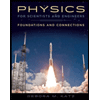 Physics for Scientists and Engineers: Foundations...PhysicsISBN:9781133939146Author:Katz, Debora M.Publisher:Cengage Learning
Physics for Scientists and Engineers: Foundations...PhysicsISBN:9781133939146Author:Katz, Debora M.Publisher:Cengage Learning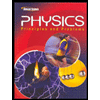 Glencoe Physics: Principles and Problems, Student...PhysicsISBN:9780078807213Author:Paul W. ZitzewitzPublisher:Glencoe/McGraw-Hill
Glencoe Physics: Principles and Problems, Student...PhysicsISBN:9780078807213Author:Paul W. ZitzewitzPublisher:Glencoe/McGraw-Hill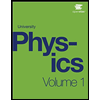 University Physics Volume 1PhysicsISBN:9781938168277Author:William Moebs, Samuel J. Ling, Jeff SannyPublisher:OpenStax - Rice University
University Physics Volume 1PhysicsISBN:9781938168277Author:William Moebs, Samuel J. Ling, Jeff SannyPublisher:OpenStax - Rice University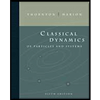 Classical Dynamics of Particles and SystemsPhysicsISBN:9780534408961Author:Stephen T. Thornton, Jerry B. MarionPublisher:Cengage Learning
Classical Dynamics of Particles and SystemsPhysicsISBN:9780534408961Author:Stephen T. Thornton, Jerry B. MarionPublisher:Cengage Learning




